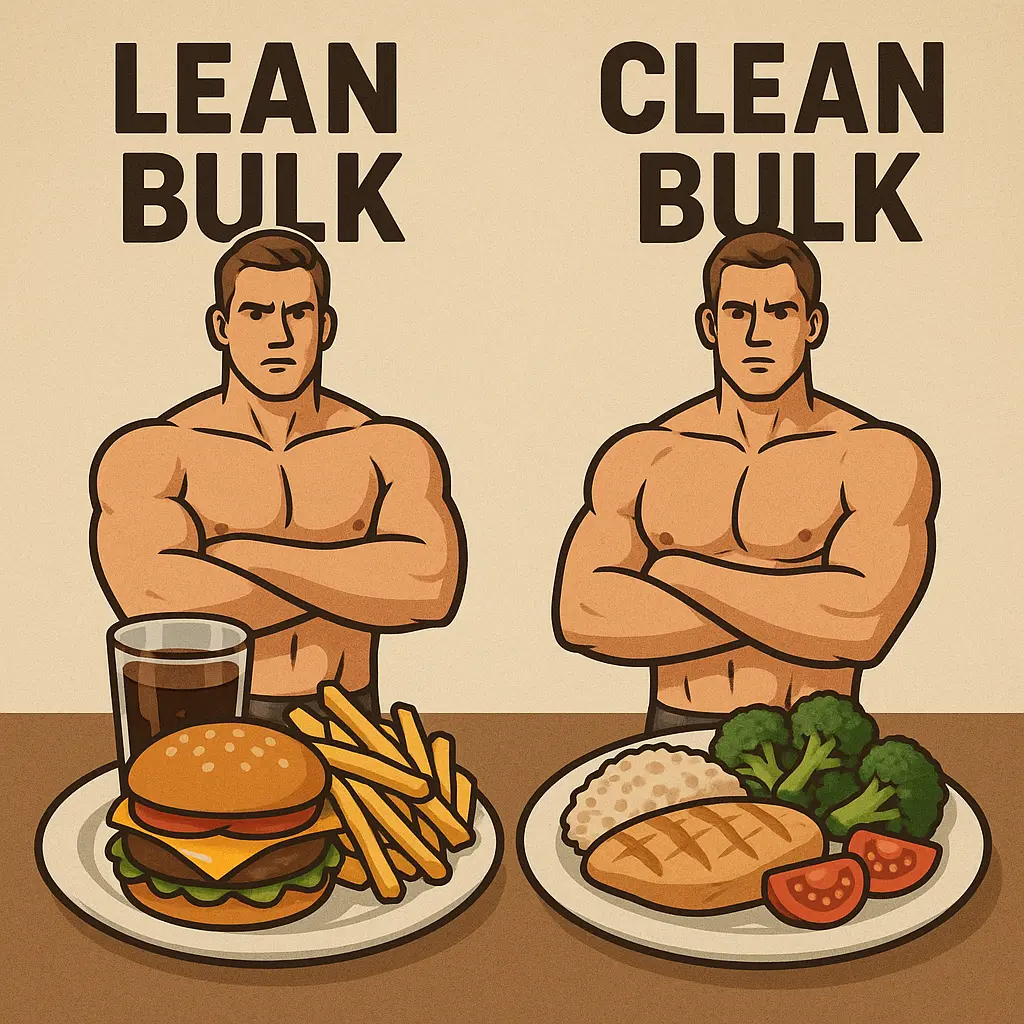Lean Bulk vs Clean Bulk: Which Strategy Builds Muscle Better?
By Yehia Yehia | 2025-06-02

What Is Lean Bulking?
Lean bulking means eating slightly above maintenance calories with a clean, whole-food-based diet. You aim to build muscle slowly while minimizing fat gain. Most increase their intake by 200–300 calories daily and focus on progressive training.
What Is Clean Bulking?
Clean bulking is similar to lean bulking but often involves a more aggressive calorie surplus (300–500 calories or more) while still avoiding junk food. The goal is faster muscle gain, though with a slightly higher risk of fat accumulation.
Lean Bulk vs Clean Bulk: Key Differences
- Calorie Surplus: Lean bulk = 5–10% surplus. Clean bulk = 10–20% surplus.
- Speed: Clean bulk builds muscle faster. Lean bulk is more controlled.
- Fat Gain: Lean bulk keeps fat lower.
- Diet Quality: Both emphasize whole foods, but clean bulks allow slightly more volume.
Pros and Cons
Lean Bulk
- + Less fat gain
- + Easier transition to cutting phase
- - Slower muscle growth
- - Requires more precision
Clean Bulk
- + Faster size gains
- + Easier to hit calorie goals
- - May require longer cut later
- - Slightly more risk of fat gain
When Should You Use Each?
Choose lean bulking if you're already lean or transitioning from a cut. Clean bulking fits better for hard gainers or during off-season mass phases. Your decision should align with your timeline, body type, and discipline.
Related Tools and Guides
Frequently Asked Questions
Yes, but it's slower. A lean bulk approach is your best option.
Usually 8–16 weeks depending on goals. Track progress every 2–3 weeks.
Supplements can help (e.g. protein powder, creatine), but whole food should be your base.